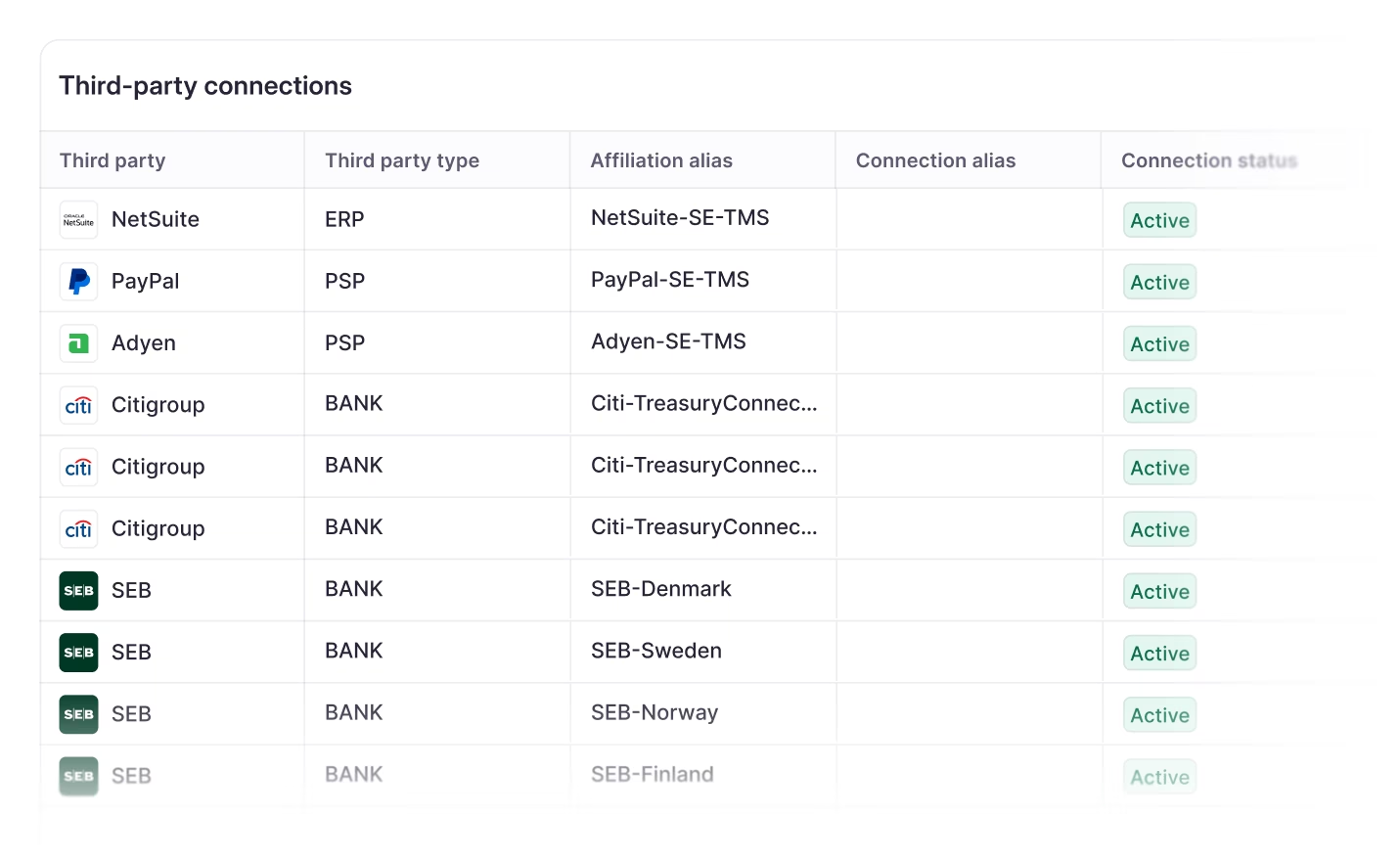Host-to-host
Host-to-host is one of the most established methods by which companies can connect to a bank. It is a direct communication link between two systems that enables files to be transferred securely.

Introduction to host-to-host (H2H)
H2H connectivity has long been regarded as the gold standard in bank connectivity, and it continues to hold this status today. It allows companies to securely exchange large volumes of financial data with their banks, a capability corporate treasury teams have relied on for many years.
A common type of H2H connection is through Secure File Transfer Protocol (SFTP) with IP whitelisting. While other methods like FTPS, HTTPS, and older protocols such as EDI (Electronic Data Interchange) are available, SFTP remains the preferred choice.
For a more in-depth understanding of host-to-host and other connectivity methods, read our full guide to bank connectivity.
How host-to-host works
H2H connections establish a direct communication link between two computer systems, providing a secure method for transferring files between a client and a server. This connection acts as a private data highway between a company, or its treasury system, and a specific bank.
With this direct connection, data exchange is automated, eliminating the need for manual intervention. Standardized file formats like ISO 20022 and BAI2 are utilized to transfer a wide range of financial data, including payment instructions, account statements, balance reports, and transaction details.
H2H connectivity is inherently secure, incorporating encryption, digital signatures, and secure channels to protect sensitive financial data during transmission. Authentication solutions such as VPNs ensure that only authorized individuals can access the data.
Pros and cons of host-to-host connectivity
H2H remains the preferred choice for most companies due to its relatively straightforward setup and ability to transfer large volumes of detailed financial information. Proven reliable over many years, H2H connectivity methods like SFTP are trusted for supporting critical financial operations.
The quality of data received via H2H depends on the sending bank, but most banks have over a decade of experience in this area. However, requesting changes to bank files and formats can be a slow process, and some banks may offer H2H services exclusively to corporate enterprise clients.
H2H does not provide real-time data access, as most banks send files on a daily or intraday basis. Despite this, many treasury departments consider H2H essential due to its unparalleled reliability and the ease of setting up connections, a result of years of standardization and use.
- Pros: H2H is a highly reliable method for transmitting financial data efficiently and securely. Trusted by businesses of all sizes, it is ideal for most payment and treasury operations.
- Cons: Data is typically sent by the bank on a daily or intraday basis, which, while sufficient for most treasury use cases, does not offer real-time availability.
How Atlar can help with host-to-host connectivity
H2H connections are one of several connectivity methods supported by Atlar. On average, Atlar customers get up and running with all their banks connected in 2-3 months – with no implementation work or external consultants required – compared to an average implementation time of 6-18 months for a Treasury Management System (TMS). To learn more about how we approach connectivity, get in touch with our team.
You can unsubscribe anytime.
Further reading
See Atlar in action.
Enter your work email to watch a live product demo.


